Tree Selection for Small Places
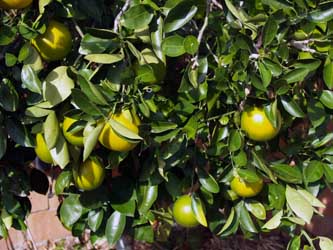 It’s easy to grow whatever you want on a big property; but a small garden is more of a challenge.
It’s easy to grow whatever you want on a big property; but a small garden is more of a challenge.
The plants need to be selected more carefully, and perhaps be treated in a different way.
You might need to prune them more often, or do something to restrict the roots from becoming invasive (eg. damaging pipes or paving).
People who have quarter acre blocks or even acreage, can often have difficult areas such as an enclosed courtyard, or a narrow strip between the house and a neighbouring property.
Any small place offers unique challenges when you come to select, use and care for plants. If any of this sounds familiar to you; this book will be a wealth of information.
Choosing the Right Trees and Shrubs
Size is the first consideration, but definitely not the only consideration when you choose a plant for a small garden. Some small plants can be a real problem in a confined area, for example:
- Scent from strongly scented plants will not escape so readily in an enclosed garden.
- Small areas enclosed by brick or stone walls, or with paving can become heat traps (this can allow plants that might be cold sensitive in your area, to be grown easier; but it can also increase the requirement those plants have for watering).
- Enclosed spaces are often poorly ventilated; and that can result in greater humidity and lower levels of carbon dioxide than what a more open garden might experience (these things can put stress on the health of some plants).
- In a smaller area, every square metre gets more intensive use, and that can mean such things as more damage by pets and increased soil compaction from people.
- Prickly or poisonous plants are more likely to be brushed in a confined area.
- Falling leaves, flowers or fruits are more likely to get to places where you do not want them.
- The density of foliage is more likely to impact upon light levels and ventilation.
- Sometimes the roots of some smaller plants may be more damaging than those of larger plants.
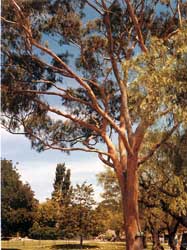 Any plant will always grow differently in different places.
Any plant will always grow differently in different places.
Most trees and shrubs will grow slower and smaller in colder climates; so often something that might be inappropriate for a small garden in a mild temperate climate; might be acceptable in a cold temperate climate.
If you have a favourite tree or shrub, but don’t have the space to grow it; all hope is not lost.
There are often ways of treating plants to accommodate the space restrictions you confront. You might grow it in a tub; or just prune it to restrict its’ size. If the roots pose a problem, you might plant it in a confined position; where the root system is restricted form getting too large.
Making Big Plants Fit in Small Places
Trees that might ordinarily be too big for a small garden may still be able to be grown, using a technique to restrict the plant’s size. The most obvious way is to grow the tree in a tub; or to restrict the spread of roots or foliage by pruning. Many larger plants can be readily kept much smaller in this manner, for example as hedges, or as topiary specimens, or even as bonsai.
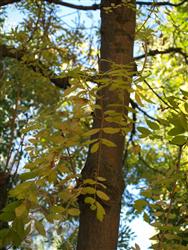 ROOT CONTROL
ROOT CONTROL
If you confine roots to a particular soil volume, they can be kept from invading unwanted areas. This technique will also tend to reduce the overall size of the tree. Toot control may be affected by any of the following methods:
- Build a concrete wall under the ground
- Woven fabrics that restrict movement of roots (eg. root control bags).
- Thin plastic or metal barriers placed vertically down into the ground to prevent roots spreading outwards from the plant into areas where the they might be a problem (e.g. pipes, water features, paved areas). If the barrier reaches deep enough (ideally at least 50 - 60cm or more) then any roots that do go beneath the barrier are usually deep enough not to cause problems for paved areas.
WEEPING TREES
Although there are many naturally weeping plants, some weeping trees are produced by grafting. Generally a tall upright growing variety forms the rootstock, and a spreading variety is grafted on top, at a desired height. This produces a straight upright trunk supporting outstretched and drooping branches on top. The height of weeping trees can be controlled (hence many have potential for smaller gardens). Be aware that some weeping trees can still spread a great deal, and become quite large. Weeping elms for instance might be inappropriate for a courtyard, but a weeping Acer palmatum ‘Dissectum’ may be appropriate.
Examples of plants commonly grafted as weepers include:
- Acer palmatum cultivars
- Cherries
- Flowering Peach Cultivars
- Silver Birch
- Roses
- Conifer varieties
- Prostrate Grevilleas (e.g. G. ‘Royal Mantle’, G. ‘Gaudi Chaudi’, G. thelmaniana).
STANDARDS
Standards are often developed by grafting an upright or bushy styled plant onto a more erect cultivar of the same plant genus.
Alternatively a normal plant can sometimes be trained, through careful pruning to achieve the same standard habit. The desired plant is allowed to grow as a single stem until the height is achieved where you desire branching (the ball shape) is to commence. At this point the plant is pruned. Pruning is continuous from this point onwards in order to achieve a bushy well-branched specimen. Any branches that develop below the desired point are removed immediately. The height of the standard and the size of the ball are purely subjective. In other words, you can select any dimension you desire.
Many small shrubs and trees are suitable for standards. The bushier the natural habit of the plant tends to be, the better suited to standard formation the plant generally is.
ESPALIERS
The spread of larger plants can often be contained by growing them as espaliers. This is the process of growing a plant up a wall or trellis, or similar structure, with the plant trained and pruned against the flat structure minimising its spread outwards. This can be a great way of utilising what might otherwise be a bare wall, and allow you to grow plants that might otherwise be to big. Trellising or wire stays might be used against the wall to provide anchorage points to train branches too.
DWARFING ROOTSTOCKS
Some trees that generally grow large can be kept smaller by grafting onto rootstocks that keep them smaller (eg. they may be less vigorous roots)
Choosing the wrong trees can cost you a great deal of money and time in any garden, as they get bigger, and problems also get bigger.
Any tree is always going to perform differently in different situations; so the best answer never comes to you from a book. If you really want to be sure; you need to understand how the tree is likely to grow either by learning it yourself; or engaging a consultant who has a good plant knowledge (and that's usually more than just a "maintenance gardener").
Plant Knowledge is the Foundation for Good Gardening
The secret to having a garden that both looks good, functions well and is free of problems such as allergens, is to know your plants and choose the best ones for the situation at hand. It may take time to learn about plants properly, but there's no escaping the fact that this is the only way to get the best choices, and avoid long term problems in your garden.
LEARNING MORE
Here are Three Excellent Ways to Learn About Plants and be able to Choose the Right Variety for the Right Spot:
Study Horticulture II ... Thousands of people have done this course over the past three decades. It's designed to lay a foundation that not only builds your current knowledge of plants, but gives you a logical frameork that makes it easier to understand and remember new plants you encounter in the future.
OR
Books
The following books and ebooks have been written by our principal (John Mason) and staff, and are available through the school's online bookstore. Click on a book for details
|
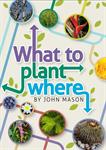
What to Plant Where
|
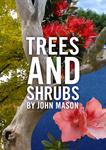
Trees and Shrubs
|

Trees and Shrubs for Small Places
|
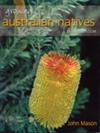
Australian Natives
|
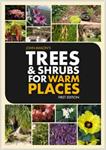
Trees and Shrubs
for Warm Places
|
Want to learn more....consider a course!
You may also be interested in....